At the initial stage of language learning, vocabulary acquisition is crucial. This includes essential and everyday topics, such as the vocabulary associated with food and meals. For beginner-level students (A1-A2), learning vocabulary related to food and linguistic resources to talk about meals not only allows them to handle everyday situations, but also brings them closer to the culture. In this article, we will explore 5 detailed and effective strategies to help Spanish as a Foreign Language (ELE) teachers improve their students’ food-related vocabulary at the A1-A2 levels.
1. Contextualization and Use of Authentic Materials:
Contextualization is essential for effective vocabulary learning. Teachers can integrate authentic materials, such as restaurant menus, cooking recipes, and cooking videos in Spanish, to provide a realistic and meaningful context. These resources allow students to become familiar with specific terms and expressions used in real-life situations. For example, organizing an activity where students prepare a simple recipe in Spanish will help them internalize the vocabulary in a practical way. If feasible, and if we also want to introduce a cultural element, it is worth considering organizing a meal at a Spanish restaurant or one from any other Spanish-speaking country. Learning while enjoying and discovering new recipes will surely leave a lasting impression on the students’ memory. As an example of this practice, at our school in Madrid, we organize weekly activities where students go out to taste tapas accompanied by their teachers.
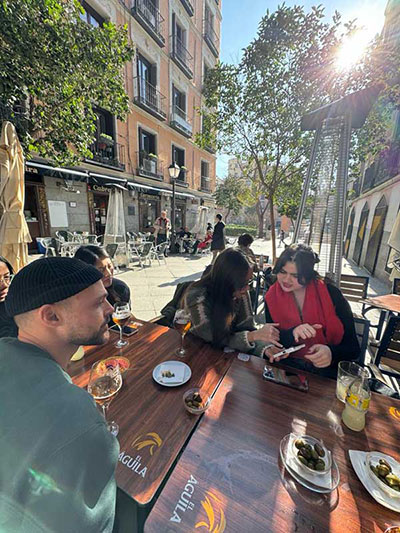
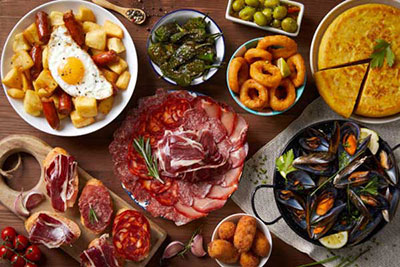
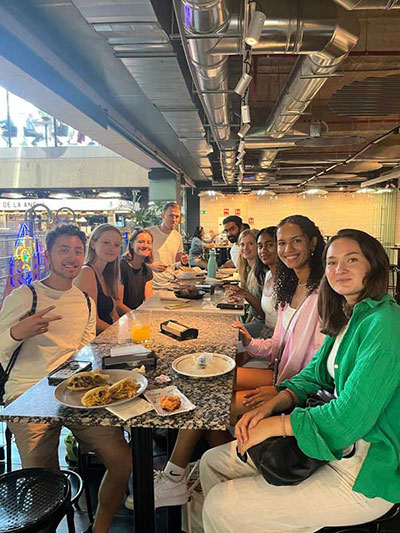
2. Games and Playful Activities:
Integrating games and playful activities into the classroom not only energizes vocabulary learning but also creates a memorable experience for students. For example, games like “The Food Chain” offer a fun way to practice food vocabulary, while role-playing games, such as recreating restaurant scenes, provide a unique opportunity for communicative practice. Role-plays and simulations are especially effective for practicing food vocabulary in everyday situations. Teachers can design scenarios where students act as customers in a restaurant, vendors in a market, or chefs in a kitchen. These activities not only allow students to apply vocabulary in authentic contexts but also foster the development of communicative skills and confidence in using Spanish. An additional suggestion would be to record these performances on video to play them back in class and facilitate a discussion about the results, adding a reflective component to the learning process.
3. Visual Vocabulary and Flashcards:
Flashcards with images of foods and typical dishes are powerful tools for teaching food vocabulary. Teachers can create cards with clear, colorful images representing a variety of foods. These cards help students associate words with visual images, thus facilitating vocabulary retention. In addition to using flashcards with images of foods and typical dishes, another effective strategy is to use infographics containing linguistic resources related to meals. These infographics can include specific vocabulary, useful phrases, and grammatical structures related to the topic. Teachers can create clear and attractive infographics that represent a variety of foods or situations related to meals. Here are a couple of examples with questions to talk about likes, preferences, and other conversations about food and eating:
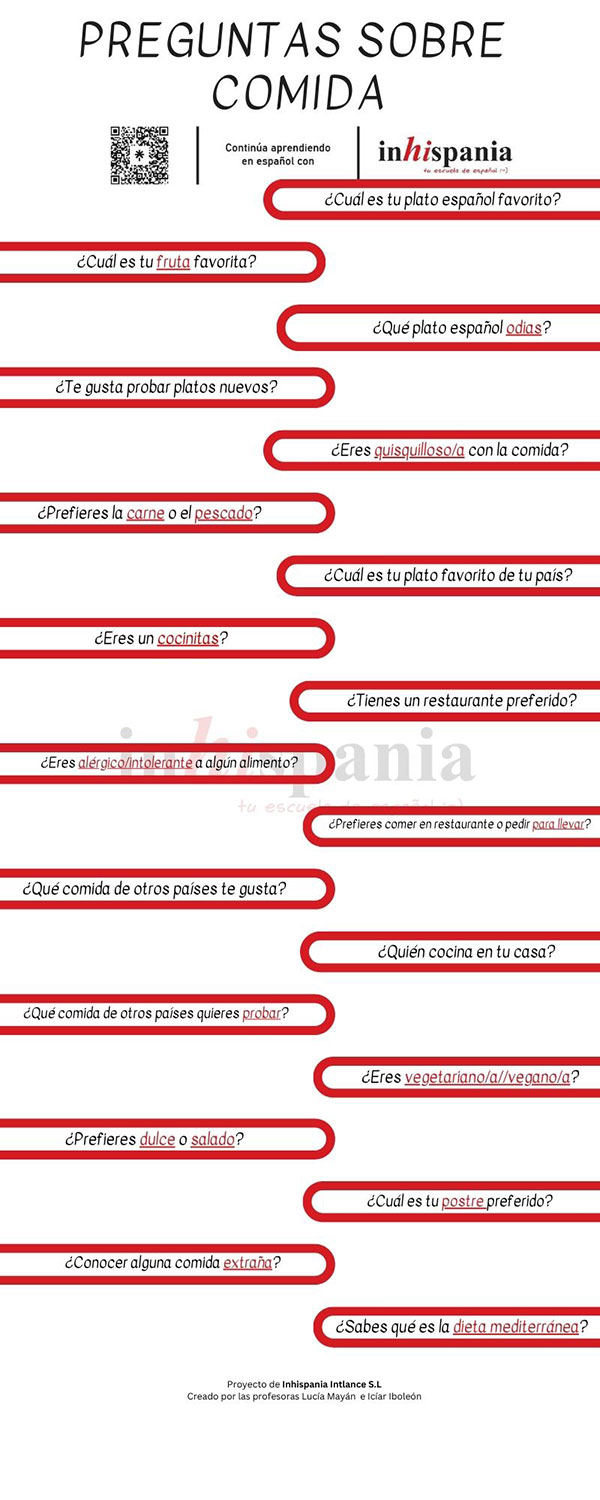
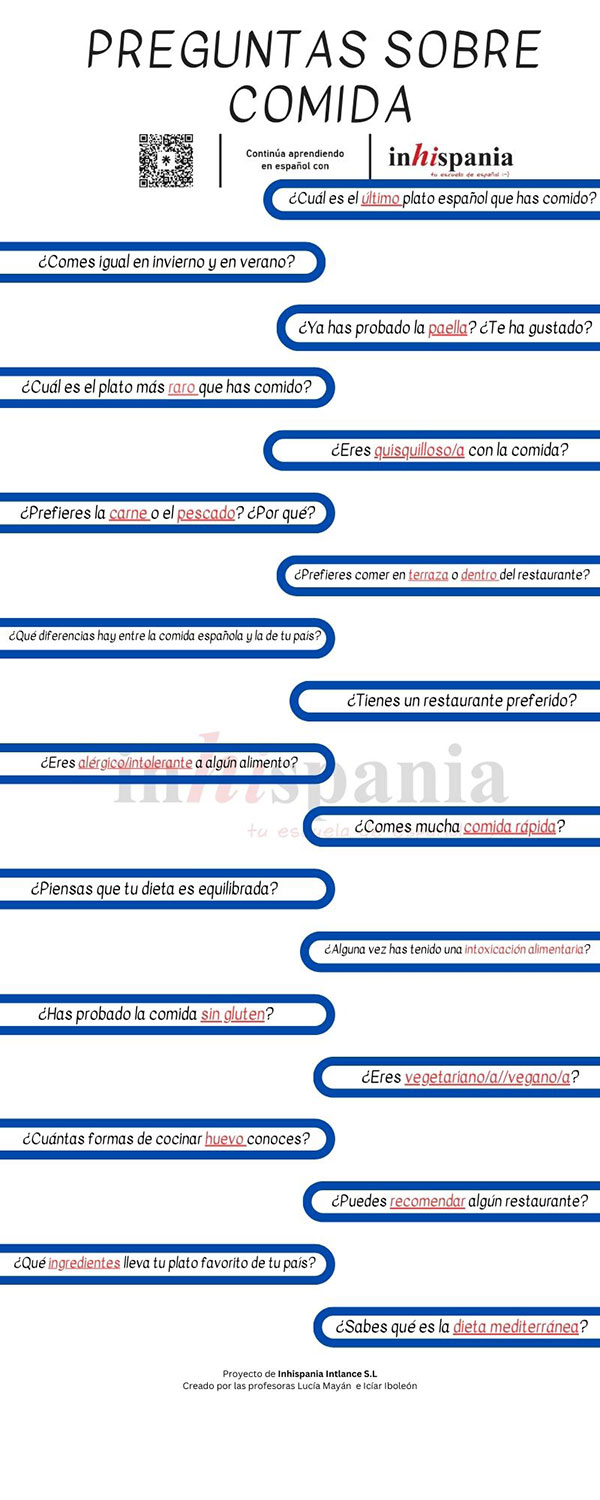
4. Personal Resource Notebook:
An additional tip to enrich the learning of food vocabulary in Spanish is to encourage meaningful learning for students by asking each one to create their own notebook or list of the most interesting resources for them. Meaningful learning is based on the idea that students retain and understand information better when they can relate it to their own experiences, interests, and prior knowledge. By allowing students to build their own notebook or resource list about food in Spanish, they are given the opportunity to personalize their learning according to their individual preferences. This can include specific terms from their favorite cuisine, typical dishes from their country of origin, or foods they would like to try in the future. Additionally, students can add images, examples of use in context, and personal notes about preferences, impressions, etc., to further enrich their resource notebook. This approach not only promotes student autonomy and motivation, but also provides them with a personalized and meaningful tool to reinforce their learning outside the classroom. By regularly reviewing and updating their resource notebook, students can continue to expand their vocabulary and consolidate their knowledge about food in Spanish in an effective and personalized way.
Teaching food vocabulary in Spanish to beginner-level students (A1-A2) requires varied and creative approaches to ensure effective and meaningful learning. By implementing the strategies mentioned above, Spanish as a Foreign Language (ELE) teachers can enrich their students’ vocabulary and prepare them to communicate fluently in situations related to something as everyday as food. Along with this, it is essential to remember the importance of constant practice and exposure to real-life situations to consolidate vocabulary learning. We hope these tips are useful in your educational work!



